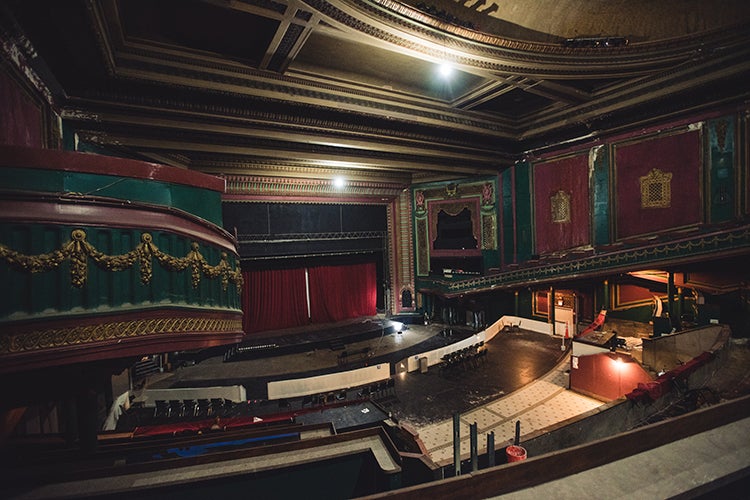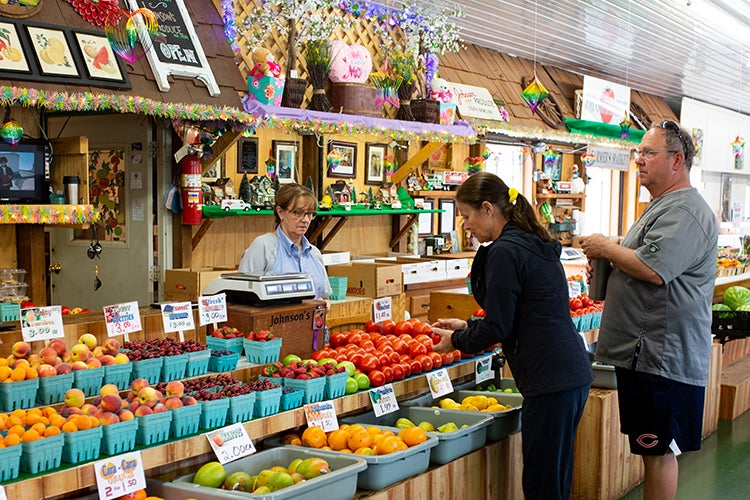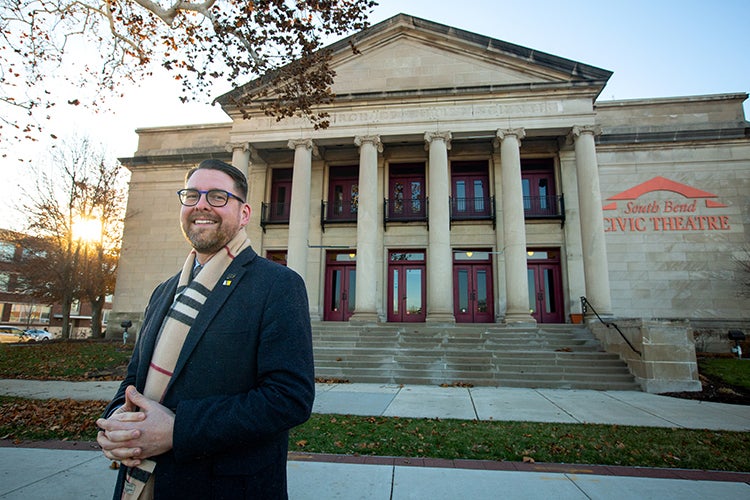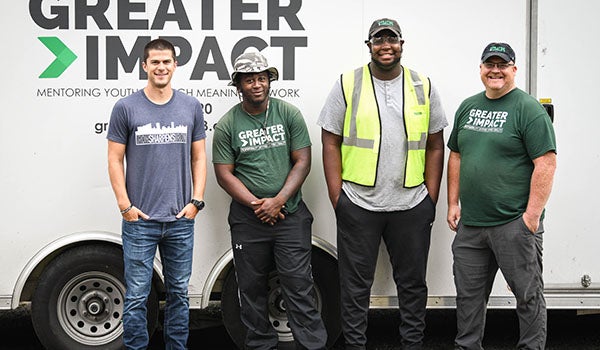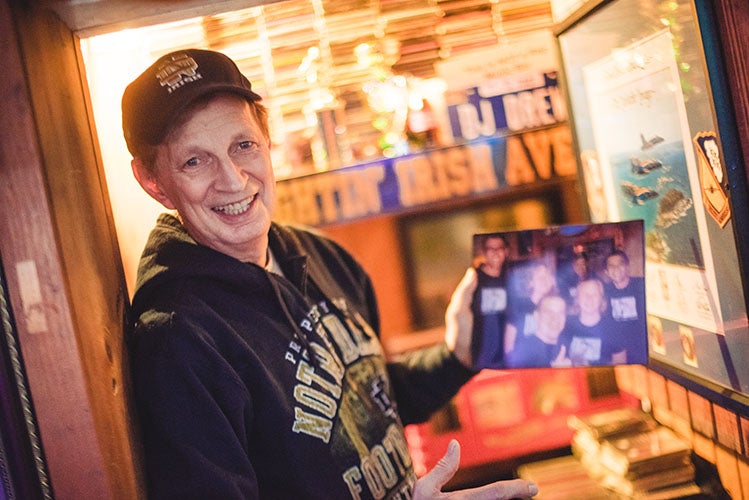Photos by Wes Jerdon/Westley Leon Studios
Clutching her cellphone in one hand and fending through the darkness with the other, Sarah Knowlton cast a band of light into the South Bend State Theatre’s basement.
She knows every inch of the once community gem, despite its currently vacant status. Descending the narrow concrete steps, she braces herself.
 “Yep, here comes the smell,” she says as must and rot penetrate the senses.
“Yep, here comes the smell,” she says as must and rot penetrate the senses.
In a narrow cell-like room near the foot of the stairs, Sarah concentrates the light on the dusty concrete walls, where the black scrawl bearing the names of yesterday’s actors greet her like an old friend.
The signatures remind her of a time when the theater featured an ever-revolving set of shows and artists. Those were days when the seats were filled with people dressed for a night on the town and bright lights illuminated the stage. It was a time when the red velvet curtains were not coated in years of dust and the pipes didn’t leak, creating a perpetual hissing in the vacant space. A time when the paint was not peeling and the walls were not crumbling and the projector room was filled with the leaping light of the latest picture and not heaps of aging brown film.
Through the decay and destruction that comes with abandonment and time, Knowlton still sees the theater for the days when it meant something to South Bend, which is why she is so passionate about bringing life back into the building’s dim confines.
Sarah is a recent graduate of Indiana University of South Bend, where she earned a bachelor’s degree in political science. She is also the director of the Save the State Theatre, a community organization that has achieved nonprofit and LLC status. The group is comprised of people like Sarah who are passionate about seeing the State Theatre revived and serving the community once more.
Sarah’s connection with the theater goes back to when she was a teenager and performed on the stage of the State Theatre when it was still open. She remembers her first role as Columbia in “The Rocky Horror Picture Show.”
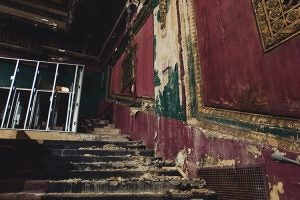 “It was like our home,” Sarah says. “I just fell in love with the place.”
“It was like our home,” Sarah says. “I just fell in love with the place.”
One day when the actors showed up at their regular time to rehearse for an upcoming production, they found that the locks had all been changed. That was back in 2016.
“It was really heartbreaking, because we did not have a home anymore and neither did anyone else who was using it,” Sarah says.
Sarah’s group has been advocating for an investor with the same vision to help them restore the building. Sarah is hoping the city could take an interest in the project and potentially sell it back to Save the State for a small amount.
If they could make this happen, Sarah says she wants to restore it enough to provide a place for people to perform once again.
According to Sarah, the owner of the State Theatre, who lives in Israel, visited South Bend in March to talk with the group. While the building’s market asking price is $400,000, he agreed to drop the price down to $250,000 for the group or the city to potentially buy, Knowlton said.
On May 3, Save the State got some bad news. The owner had accepted a letter of intent from another potential buyer. This is not the first time this has happened. In fact, Sarah said there has been interest from several buyers, but once they see the condition of the theater, they back out.
While it might seem like a good thing to have an interested buyer, Knowlton said Save the State fears that the building could fall into the wrong hands and that those interested might not have the theater’s revival in mind.
“That’s why I fear in another buyer. I’m afraid they will come in and turn into like a dentist [office],” Sarah says. “I know that [sounds] ridiculous, but you know what I mean? Turn it into something the community can’t use.”
Constructed in 1919, the former Blackstone Theatre originally opened in 1921. Throughout its time in downtown South Bend, it has had a history of closing and reopening and closing again. In 1932, it was listed as closed, due to constraints from the Great Depression, according to Sarah. It reopened again in 1934 and remained that way until 1957 when it closed again. Sarah says it also opened again in the 1990s, this time as a night club. It reopened in 2012, after being purchased by a cultural group aiming to renovate it, according to Save the State’s Facebook page.
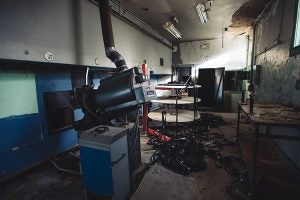 “There’s a lot of historical significance,” Sarah says. “You walk by it at night and you say, ‘this would be so great if [the marquee] was lit up and working.”
“There’s a lot of historical significance,” Sarah says. “You walk by it at night and you say, ‘this would be so great if [the marquee] was lit up and working.”
While inside the State Theatre with members of the Save the State, Sarah says those passing through downtown will knock on the door and ask to come inside. While they cannot because of the condition of the building, Sarah says they will share memories of the theatre when it was operating.
“This guy walking by once [and] told us he remembers throwing popcorn from the balcony on the people below. I have a friend whose parents met while working there,” Knowlton said. “There are so many people that have memories from like the ‘70s and ‘80s.”
With the theater located in the heart of downtown, Sarah says she believes revitalization would bring more people to the area.
“I want the State Theater to include everyone. I want it to be diverse,” Sarah says. “That’s why I think it would be a great community space.”
A glance inside the theater indicates that it would take significant work to make it usable again. According to Sarah, the roof needs some repairs. A pipe burst during the polar vortex earlier this year, causing a leak, asbestos and water damage, as well as general cleaning and an HVAC system.
Sarah said she does not have an exact number on the cost of renovating the State Theatre, but approximated that it could cost about $2 million to renovate the building enough to be safe and accessible.
“There’s definitely a want for it, but I feel like people are like, ‘how?’” Sarah says. “This is something the community wants. This is something the community needs. We don’t have another 10 years to let it sit and rot.”

